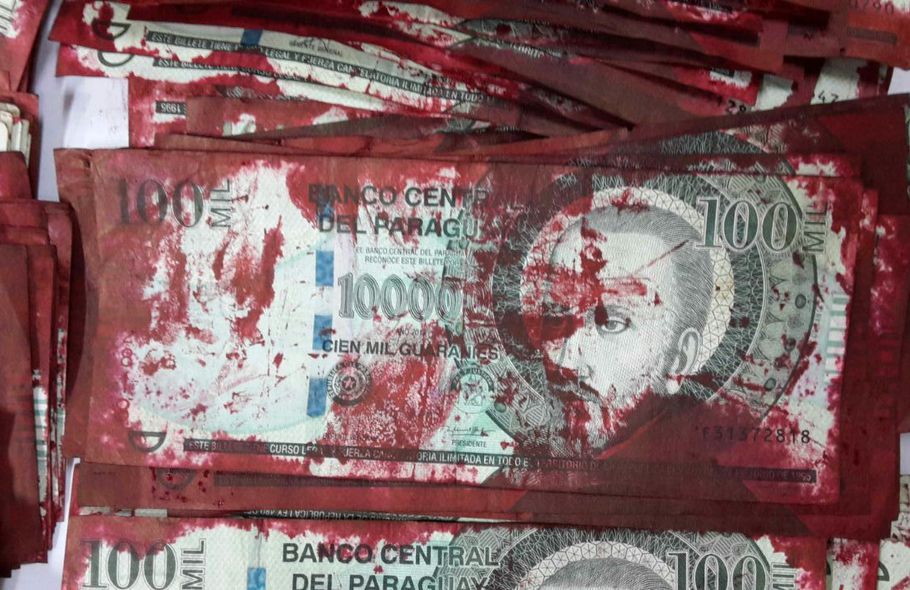RIO DE JANEIRO, BRAZIL – The Central Bank of Ecuador will implement a new security mechanism to combat crime and ATM theft. The Intelligent Banknote Neutralizer System will stain the bills with special ink. The stained money will lose its value and cannot be used as a means of payment. All financial institutions in the country will have to apply the measure gradually.
An administrative resolution approved by Guillermo Avellán, general manager of the Central Bank of Ecuador, determines how the security mechanism that will stain the banknotes will work. Suppose an attempt of robbery is detected at an ATM or during the transportation and custody of banknotes. In that case, an inking device will be automatically activated. It will stain the money with a noticeable trace, extending towards the banknotes’ center and is normally more visible at the edges.
Read also: Check out our coverage on Ecuador
According to the Bank’s resolution, the security ink is non-toxic to human health and will serve to mark real currency in a permanent and non-reversible manner. This intelligent ink mechanism is easily recognizable and differs from other stains that banknotes may have because this ink will mark a large part of the banknote and cannot be removed by any process, nor with any substance.

The minimum characteristics of the Intelligent Banknote Neutralization System must ensure a minimum coverage of 20% of the surface of each banknote, in 100% of the banknotes protected under this system. In addition, the service providers must provide security certifications for the system. They must have timely information on the useful life cycle of the high-security ink to ensure its proper functioning. Each financial institution in Ecuador must implement this mechanism, as resolved by the Central Bank.
Inked banknotes -that is, money that was degraded by being stained with security ink- will lose their monetary value. The Central Bank of Ecuador warns citizens and businesses that carry out cash transactions not to accept these inked banknotes because they are stolen money. The inked bills will not be received by the Central Bank of Ecuador directly at its counters, meaning that a person or non-bank institution will not be able to exchange bills that are stained with the security ink.
However, financial institutions will be able to exchange the banknotes. For this purpose, the Central Bank’s resolution establishes a series of conditions. First, the Central Bank will only receive in deposit inked banknotes from those financial institutions affected by criminal acts, which justifies the security ink. The banknotes to be deposited must be dry and distributed in 10 bundles containing 100 banknotes each. These bundles will contain a label with the legend: “Contains inked specie”.
In addition, financial institutions must submit a request to receive the deposit of inked banknotes addressed to the National Directorate of Monetary Species of the Central Bank of Ecuador, a copy of the report of the theft or event that occurred, duly filed with the competent authority and a form prepared by the National Directorate of Monetary Species, detailing the quantity and denominations of the inked banknotes. If the financial institutions fully comply with the process, the Central Bank will return the money.
For customers and members of Banks and Cooperatives to be aware of this system, the Central Bank will carry out informative communication campaigns and issue guidelines for financial institutions to implement them.
Uruguay, Chile, and Paraguay are some countries in the region that use the banknote inking mechanism to combat robberies to financial institutions.

